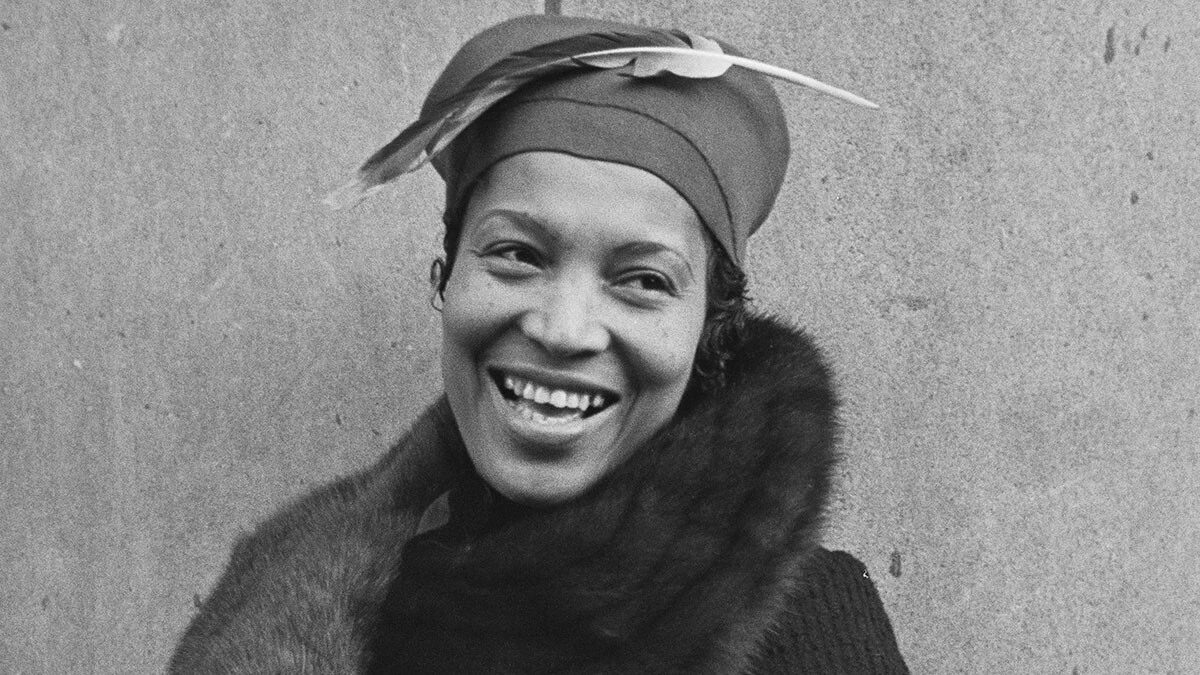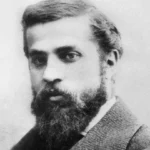
Zora Neale Hurston, a pivotal figure of the Harlem Renaissance, left an indelible mark on American literature and anthropology. Known for her vibrant storytelling and groundbreaking anthropological studies, Hurston’s work continues to inspire and educate readers today. From her exploration of African American folklore to her critically acclaimed novels, she defied literary norms and celebrated the richness of Black culture. This introduction sets the stage for understanding Hurston’s multifaceted contributions to literature, anthropology, and cultural preservation.
Early Life Mystery: The exact birth year of Zora Neale Hurston remains uncertain, with records suggesting it was between 1891 and 1893. She was born in Eatonville, Florida, which holds the distinction of being the first incorporated Black town in the United States. This unique community, where African Americans governed themselves and thrived independently, profoundly influenced Hurston’s upbringing and perspective. Hurston often depicted Eatonville in her works, highlighting its vibrant culture and the sense of pride and autonomy it instilled in its residents. The uncertainty surrounding her birth year adds an element of mystery to her early life, reflecting the broader complexities of documenting African American history during that era.
Folklorist Extraordinaire: Zora Neale Hurston emerged as a leading figure in the Harlem Renaissance, the influential cultural movement of the 1920s and 30s that celebrated African American artistic and intellectual achievements. Her expertise in collecting African American folklore set her apart from her contemporaries. Hurston meticulously gathered folktales, songs, and customs from the Black communities in the South, capturing the oral traditions that were often overlooked by mainstream scholars. Her work not only preserved these rich cultural expressions but also provided a window into the everyday lives and resilience of African Americans during a period marked by racial segregation and discrimination.
Anthropology Studies: Hurston’s academic journey in anthropology began at Howard University, where she was mentored by the renowned anthropologist Alain Locke. In 1927, she became one of the first Black women to receive a Guggenheim Fellowship, a prestigious grant that funded her fieldwork in the South. Hurston’s anthropological studies were groundbreaking; she immersed herself in the communities she studied, using her insider status to gather authentic and intimate accounts of Black folklore. Her work bridged the gap between academic scholarship and cultural preservation, highlighting the significance of African American oral traditions in the broader tapestry of American culture.
“Mules and Men” Published: In 1935, Zora Neale Hurston published “Mules and Men,” a seminal collection of African American folktales and oral histories. This work, which remains a cornerstone of African American literature, captures the richness and complexity of Black Southern culture. Hurston’s narrative style in “Mules and Men” is both scholarly and accessible, blending her anthropological insights with storytelling prowess. The book offers a vivid portrayal of the customs, beliefs, and humor that define the Black experience in the South, preserving these traditions for future generations and providing an invaluable resource for understanding African American heritage.
“Their Eyes Were Watching God” Released: Hurston’s critically acclaimed novel “Their Eyes Were Watching God” was published in 1937. This groundbreaking work tells the story of Janie Crawford, a Black woman’s journey of self-discovery and search for love, challenging societal norms and expectations. Although it received mixed reviews upon release, with some critics misunderstanding its themes and narrative style, the novel has since been recognized as a classic of American literature. “Their Eyes Were Watching God” is celebrated for its deep exploration of Black womanhood, its lyrical prose, and its bold use of dialect, solidifying Hurston’s legacy as a literary pioneer.
Florida Focus: Much of Zora Neale Hurston’s work is deeply rooted in the themes of race, gender, and identity, explored within the context of the African American experience in the Southern United States. Her birthplace, Florida, frequently serves as a backdrop for her stories and folklore collections. The state’s diverse cultural landscape, from its rural towns to its vibrant communities, provided Hurston with a wealth of material. Florida’s influence is evident in her detailed descriptions of its environment and the authenticity of the characters and dialogues in her work, reflecting the real-life experiences of the people she encountered.
Championed Black Dialect: Hurston’s use of Black vernacular in her writing was a bold and revolutionary choice at the time. While some contemporaries criticized her for not conforming to traditional literary standards, Hurston defended the use of Black dialect as a valid and expressive form of language. She believed it captured the richness and nuance of African American speech, providing a more authentic representation of her characters’ voices. This commitment to linguistic authenticity helped pave the way for future writers to explore diverse voices and styles, contributing to the evolution of American literature.
Prolific Playwright: In addition to her novels, Zora Neale Hurston wrote several plays that explored themes similar to those in her prose works, such as race, identity, and the Black experience. Her plays, including notable works like “Sweat” (1926) and “Seraph on the Suwanee” (1935), offered another platform for her storytelling. Through theater, Hurston brought her characters and narratives to life in a dynamic and immediate way, engaging audiences with the cultural and social issues she was passionate about. Her contributions to theater are an integral part of her literary legacy, demonstrating her versatility as a writer.
Friendship with Langston Hughes: Zora Neale Hurston had a complex friendship with fellow Harlem Renaissance writer Langston Hughes. Their relationship was marked by both collaboration and conflict. They worked together on projects such as the play “Mule Bone,” but their differing literary approaches and views on depicting Black life often led to disagreements. Despite these tensions, both writers deeply respected each other’s talents and contributions to the Harlem Renaissance. Their interactions reflect the broader debates within the movement about the representation of African American culture and the role of Black artists in society.
Financial Struggles: Despite her literary achievements, Zora Neale Hurston faced financial difficulties throughout her life. She often relied on grants, fellowships, and various jobs to support herself. Even at the height of her career, she struggled to achieve financial stability. Hurston’s later years were marked by poverty and obscurity, as her work fell out of favor with the literary establishment. Nevertheless, she continued to write and pursue her passions, leaving behind a body of work that would later be rediscovered and celebrated for its profound impact on American literature and culture.
Voodoo Queen Image Rejected: Zora Neale Hurston’s interest in Haitian Vodou culture was often sensationalized, leading some to label her a “voodoo queen.” However, Hurston herself rejected this moniker, emphasizing that her studies were conducted with scholarly respect and a genuine desire to understand the religion. Her anthropological work in Haiti and her book “Tell My Horse” (1938) provided detailed and nuanced accounts of Vodou practices, aiming to dispel myths and stereotypes. Hurston’s respectful approach highlighted her commitment to cultural preservation and her role as an anthropologist seeking to document and honor the traditions she studied.
Controversial Anthropological Practices: Hurston’s anthropological methods, particularly her use of performance and theatricality in collecting folklore, have sparked debate among scholars. Some argue that her immersive and interactive approach may have influenced the content she obtained, potentially blurring the line between observation and participation. Critics suggest that her methods might have affected the authenticity of the data collected. Despite this controversy, Hurston’s work remains invaluable for its rich and vibrant portrayal of African American folklore, demonstrating her unique ability to connect with her subjects and capture the essence of their stories.
Later Works and Rediscovery: Despite a decline in attention to her work during the later decades of her life, Zora Neale Hurston continued writing and exploring new themes. It wasn’t until the 1970s that a resurgence of interest in her work began, largely due to the efforts of scholars and writers like Alice Walker. This rediscovery led to a reevaluation of Hurston’s literary significance, bringing her novels, plays, and folklore collections back into the public eye. Her writings have since been celebrated for their cultural and historical importance, securing her place as a pivotal figure in American literature.
Legacy as a Literary Pioneer: Zora Neale Hurston’s legacy extends far beyond her individual works. She paved the way for future generations of Black writers by celebrating African American culture and language in her storytelling. Hurston’s bold use of dialect and her focus on Black female protagonists challenged literary conventions and opened doors for more diverse voices in literature. Her influence can be seen in the works of many contemporary writers who continue to draw inspiration from her groundbreaking contributions to American literature and her unwavering commitment to cultural authenticity.
Honors and Recognition: In recent decades, Zora Neale Hurston has received numerous posthumous honors recognizing her contributions to literature and anthropology. She was inducted into the Florida Writers Hall of Fame in 1983 and the National Women’s Hall of Fame in 2001. Her legacy is also commemorated through various streets, schools, and libraries named in her honor. These accolades reflect the enduring impact of her work and the broad recognition of her role as a trailblazer in celebrating African American culture and storytelling.
Howard University Hurston Collection: Howard University, where Hurston studied anthropology, houses the Zora Neale Hurston Collection. This vast archive includes her writings, personal effects, and research materials, offering invaluable resources for scholars and enthusiasts interested in her life and work. The collection provides insight into Hurston’s creative process, her fieldwork methodologies, and her personal experiences. It serves as a testament to her enduring legacy and her significant contributions to the fields of literature and anthropology.
“Dust Tracks on a Road” (1942): Zora Neale Hurston’s autobiography, “Dust Tracks on a Road,” published in 1942, provides a fascinating glimpse into her early life, travels, and experiences as a writer and anthropologist. The book candidly recounts her journey from Eatonville, Florida, to becoming a prominent figure in the Harlem Renaissance. Through her autobiography, Hurston shares her reflections on race, gender, and cultural identity, offering readers a deeper understanding of the personal and professional challenges she faced. “Dust Tracks on a Road” remains an essential work for those interested in her life and legacy.
“Tell My Horse” (Folklore Collection, 1938): Published in 1938, “Tell My Horse” is another significant work by Zora Neale Hurston, capturing African American folktales, hoodoo practices, and personal anecdotes from her fieldwork in the South. The book delves into the rich spiritual and cultural traditions of Black communities, providing a detailed and respectful account of hoodoo, a form of folk magic. Hurston’s work in “Tell My Horse” highlights her dedication to preserving and documenting the diverse cultural heritage of African Americans, making it an essential addition to her body of work.
Support from Alice Dunbar Nelson: Early in her career, Zora Neale Hurston received crucial support from Alice Dunbar Nelson, a prominent writer and activist of the Harlem Renaissance. Nelson recognized Hurston’s talent and helped connect her with influential figures in the literary world, providing opportunities for Hurston to showcase her work. This mentorship and support played a significant role in Hurston’s early success, enabling her to gain the recognition and resources needed to pursue her literary and anthropological endeavors.
Folk Music Collaborations: Hurston collaborated with folklorist Dorothy Scarborough and musician Alberta Hunter on collecting and documenting African American spirituals and folk songs. These efforts were part of a broader movement to preserve the musical heritage of African American communities, capturing songs that might otherwise have been lost. Hurston’s collaborations helped ensure that these spirituals and folk songs were recorded and studied, contributing to the preservation of a vital aspect of African American cultural history and enriching the field of ethnomusicology.
Multiple Languages: Zora Neale Hurston was known to be multilingual, which greatly enriched her anthropological and literary work. In addition to English, she demonstrated proficiency in Haitian Creole, a language she learned while conducting research in Haiti. Her ability to communicate in Haitian Creole allowed her to gain deeper insights into the local culture and religious practices, particularly Vodou. This linguistic skill enabled Hurston to document and understand the nuances of the stories and traditions she encountered, ensuring a more accurate and respectful representation of the communities she studied.
Journalistic Pursuits: Beyond her work in fiction and anthropology, Zora Neale Hurston also engaged in journalism. She wrote articles for various publications, including The Saturday Review and The Negro World, a Harlem Renaissance newspaper. In these articles, Hurston showcased her sharp observational skills and keen social commentary, addressing issues such as racial inequality, cultural identity, and the everyday experiences of African Americans. Her journalistic work provided a platform for her to reach a broader audience and contribute to public discourse on important social issues.
Storytelling Performances: Hurston was not only a talented writer but also a captivating storyteller. She often delivered dramatic readings of her work and the folklore she collected at public events, bringing her stories to life through performance. These storytelling sessions helped popularize her work and allowed her to connect with audiences in a personal and engaging way. Hurston’s performances highlighted her dynamic presence and deep understanding of the oral traditions she sought to preserve, further cementing her reputation as a master storyteller.
Short Stories and Essays: While Zora Neale Hurston is best known for her novels, she also wrote numerous short stories and essays that explored a wide range of themes. These works often delved into the complexities of African American life, gender dynamics, and cultural identity. Hurston’s short stories and essays provided additional insights into her unique voice and perspective, showcasing her versatility as a writer. They remain an important part of her literary legacy, offering readers a broader understanding of her creative and intellectual contributions.
Final Resting Place: Zora Neale Hurston passed away in 1960 in relative obscurity, and her grave in Fort Pierce, Florida, remained unmarked for decades. In 1973, author Alice Walker spearheaded a fundraising campaign to place a headstone at Hurston’s gravesite, bringing long-overdue recognition to her contributions. The headstone reads, “Zora Neale Hurston: A Genius of the South,” honoring her legacy and ensuring that future generations remember her impact on literature and culture. This act of commemoration reflects the enduring influence of Hurston’s work and the respect she has garnered posthumously.
5 FAQs About Zora Neale Hurston:
What was Zora Neale Hurston most famous for?
Zora Neale Hurston is best known for two major contributions:
Her novel “Their Eyes Were Watching God” (1937): This groundbreaking coming-of-age story centered on a Black woman’s search for love and self-discovery challenged societal norms and is considered a classic of American literature.
Her expertise in African American folklore: Hurston’s work as a folklorist documented rich cultural traditions through folktales, songs, and customs collected in the South. Her most famous collection is “Mules and Men” (1935).
What was Zora Neale Hurston’s role in the Harlem Renaissance?
Hurston was a leading figure in the Harlem Renaissance, a flourishing artistic and cultural movement among African Americans in the 1920s and 30s. She contributed by:
Celebrating Black culture and language: Her writing embraced Black vernacular and explored themes of race, gender, and identity within the African American experience.
Adding a unique voice to literature: Her focus on folklore and Southern settings enriched the diversity of the Harlem Renaissance.
What was controversial about Zora Neale Hurston’s work?
There are two main areas of debate:
Anthropological methods: Some scholars critique her reliance on performance and theatricality in collecting folklore, questioning whether it influenced the content she obtained.
Use of Black dialect: While Hurston championed Black vernacular in her writing, some critics initially saw it as a deviation from proper literary standards. Today, it’s recognized as a valid and expressive form of language.
Why did Zora Neale Hurston face financial struggles?
Despite her literary achievements, Hurston faced financial difficulties throughout her life for several reasons:
Limited commercial success: While critically acclaimed, some of her works were not immediate commercial successes.
Reliance on grants and fellowships: These funding sources weren’t always consistent or readily available.
Focus on creative pursuits: Hurston prioritized her writing and research over more lucrative career paths.
What is Zora Neale Hurston’s legacy today?
Zora Neale Hurston’s legacy is multifaceted:
Literary Pioneer: She paved the way for future generations of Black writers by celebrating Black culture and language in her work.
Folklore Preservation: Her extensive collections of African American folktales and oral histories offer invaluable resources for understanding and appreciating this cultural heritage.
Enduring Voice: Her groundbreaking storytelling and exploration of social issues continue to resonate with readers today.








